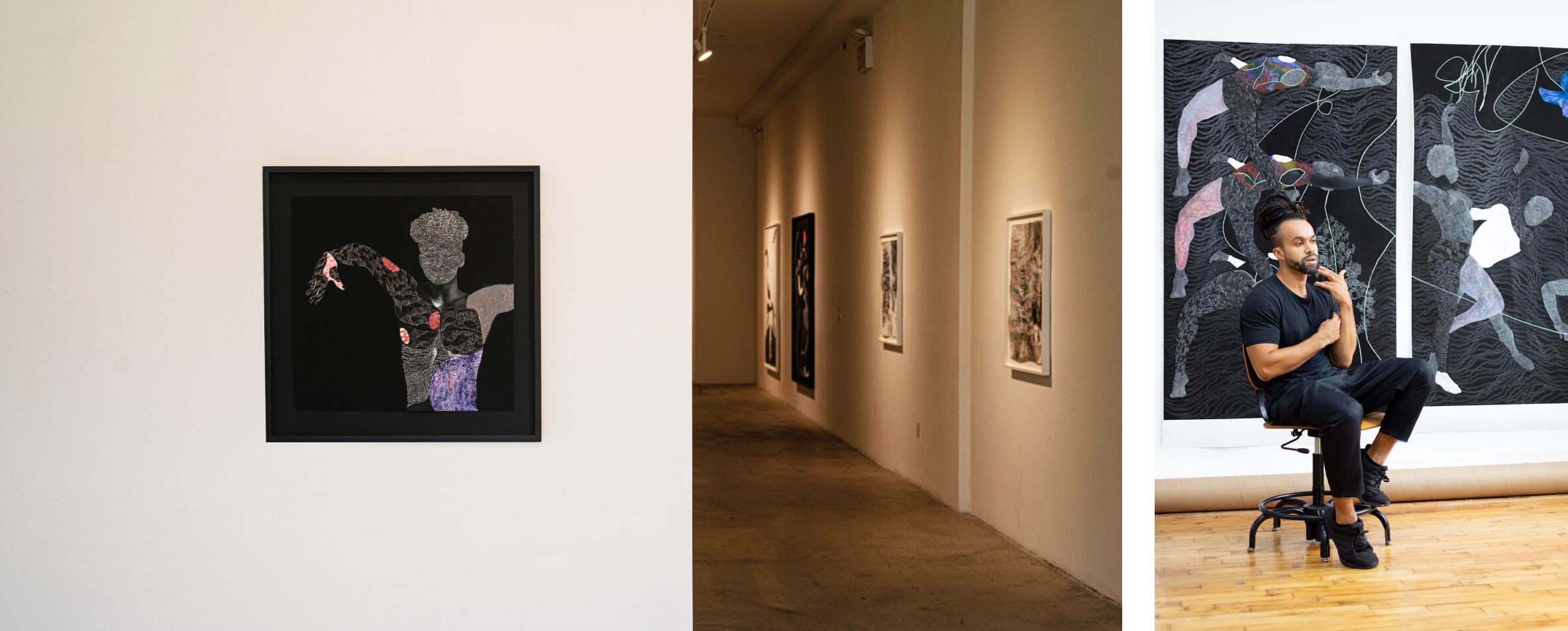Born and raised outside of Pittsburgh in the town of Beaver Falls, Pennsylvania, currently living and working between NYC and DC
He earned a Bachelor’s Degree in Nursing from VCU, and practiced critical-care nursing in DC-area hospitals for nine years. Lewis’ first artistic pursuit was playing the violin in 2008, followed by drawing in 2010. Since 2017 he has lived and worked in New York City.
Lewis’ work has been exhibited in Plumb Line: Charles White and the Contemporary at The California African American Museum, The Studio Museum in Harlem, The Yale Center for British Art, 21c Museum Hotels,The Armory Show, Paris Photo, Expo Chicago, Art Untitled Miami Beach, and is currently in Men of Change: Power, Triumph, Truth, touring with the Smithsonian Institution Traveling Exhibition Services.
Past residencies include Art on the Vine in Marthas Vineyard, Pioneer Works and Dieu Donne. Lewis’ work is in the public collections of the Baltimore Museum of Art, The Blanton Museum, The Studio Museum in Harlem, Grinnell College Museum of Art, and 21c Museum Hotels,Artistic Museum of Contemporary Art, Cardiff, United Kingdom, Brooklyn Museum, Brooklyn, NY, International African-American Museum, Charleston, SC, Kadist Art Foundation, San Francisco, CA, Santa Barbara Museum of Art, Santa Barbara, CA, Virginia Museum of Fine Arts, Richmond, VA , Weatherspoon Art Museum, Greensboro, NC, Wellin Museum of Art, Clinton, NY. He has lectured at Yale University as part of Claudia Rankine’s Racial Imaginary Institute, the Yale Center for British Art, and Paris Photo.
I am interested in the unseen. My work is driven by empathy, and the desire to understand nuanced points of view.
By altering photographs, I aim to challenge people’s perspectives on race and history through distortion and illusion. Treating the paper like an organism itself, I sculpt patterns akin to cellular tissue and anatomical elements, allowing hidden histories and patterns to be uncovered from the photographs. I approach subjects and imagery from a diagnostic place with the idea of utilizing diagnostic lenses and contrast dyes . By virtue of my medical training, I am interested in the tensions that exist within and without us. Ultimately, the work embraces humanistic ideas of human connection and understanding.

